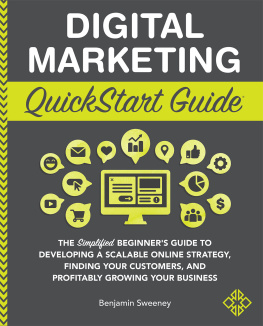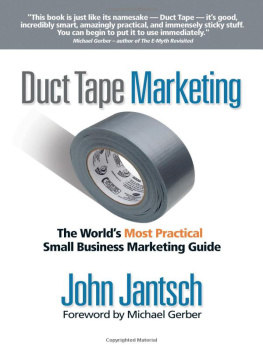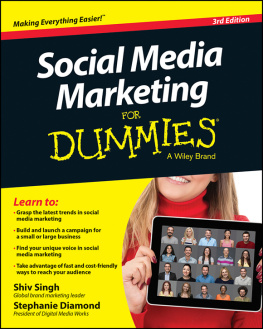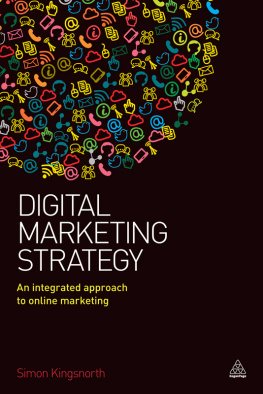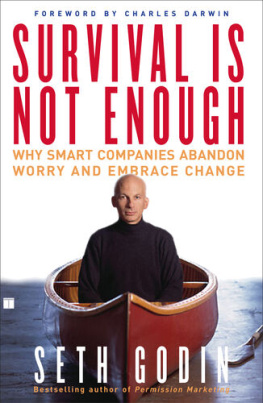Text and illustrations copyright 2002 - 2017
by Tom Fishburne and Marketoonist, LLC.
All rights reserved. No part of this book may be reproduced in any form without permission from the author.
All cartoons are available to license at marketoonist.com (easy-peasy, I promise). Thank you for helping support the copyrights of these cartoons by licensing them before using them.
If you like the cartoons, you can also sign up for a cheeky email newsletter with a new cartoon each week at marketoonist.com or follow @tomfishburne.
ISBN 978-0-9990703-1-4 (paperback)
ISBN 978-0-9990703-0-7 (ebook)
Tom Fishburne
Marketoonist, LLC
111 Bolinas Ave
San Anselmo, California 94960
marketoonist.com
To Tallie
From echova to Bolinas
FOREWORD
Hello, friend! Im excited that you have picked up this book and youre about to read it. Because I know youre going to love it!
In Your Ad Ignored Here, Tom gently lampoons and lightly pokes fun at marketing and marketers over the past 15 years. If youve been in marketing for any of that time (or longer, like I have!) youll recognize yourself (and people you know) in these cartoons.
On the one hand, this is a simple collection of drawings depicting the pedestrian, workaday lives of marketers. But it is also so much more powerful than that, because the situations and characters Tom portrays are universal. Youll nod your head along as you read these cartoons, in other words.
But even more than that, this book reads like a time capsule of marketing since 2002, when Tom first started drawing the first of these some 200 business illustrations as a hobby when he was an associate marketing manager at General Mills.
In other words: If marketing kept a diary, this would be it.
Youll witness the evolution of brand marketing; the launch of Twitter and Facebook and Snapchat and other social media platforms; the rise of loyalty programs; design thinking; location-based marketing; showrooming; #brandedhashtags; retargeting; the rise of Millennials; and, of course, content, cat memes, emojis, virtual reality, Alexa, listicles, and the holy grail of brands everywhere ... the elusive unicorn known as the viral video!
Change happens gradually and then suddenly, Hemingway wrote. But its easy to forget just how much marketing has changed until you see it all laid out in a kind of irreverent timeline, the way Tom has.
But, paradoxically, Toms book also underscores just how much marketing hasnt changed.
The struggles that Tom started characterizing 15 years agofear of risk in a corporate environment, the heavy mantle of legal oversight, buzzwords and clichs, PR crisis predicaments, meetings (and pre-sell pre-meetings! and post-meeting meetings! and unofficial debrief meetings!), and the brief and wobbly tenure of many corporate CMOsall these things are all as much a part of business today as they have ever have been.
And some of Toms cartoons from a few years backespecially those that make fun of air travel customer serviceare downright prescient when we look at them through todays lens.
Tom is recording the progression and growing complexity of modern marketing. But he is also exposing challenges that we all grapple with. And in doing so he reminds us that, first, maybe we ought to think about things differently; and, second, that we arent alone.
The best compliment I hear from people is that its like Im spying on them at work, Tom told me. As you devour this book, you might feel that way, too.
And I hope you do, because it will remind you that none of us are ever alone. Not really, anyway.
It might seem like our situations are completely unique or that our own organizations inner politics or workings are unlike what any other marketer could possibly deal with ... but the truth is that our challenges are indeed universal, and our responses often collective. At least, our humor is shared.
Theres some comfort in that, when you think about it.
Ann Handley
Chief Content Officer
MarketingProfs
Author of the Wall Street Journal bestseller, Everybody Writes: Your Go-To Guide to Creating Ridiculously Good Content

INTRODUCTION
When I was eleven, I wanted to grow up to be a cartoonist. I used to copy Bloom County, The Far Side, and Calvin and Hobbes cartoons with Silly Putty, changing the dialogue to make fun of my brothers. I instantly loved how cartoons could capture the inside jokes of my family (and helped retaliate against the dreaded wet willy).
But practicality kicked in and I put those dreams on hold. Ironically, it was at Harvard Business School that I started drawing cartoons again. I created a weekly strip for the school paper and rediscovered how cartoons captured inside jokes, this time about student life. I drew an early cartoon that made fun of one of my favorite classes. The professor of that class, Frances X. Frei, surprised me the next day with my cartoon on the overhead projector. Two things happened: everyone in the class laughed and I received my first Harvard Business School cold call. I was hooked. Professor Frei later commissioned me to draw a few cartoons as teaching aids in business cases. She taught me a second characteristic of cartoonsthey help simplify complex ideas.
Fifteen years ago, I arrived at General Mills as a newly minted MBA and discovered that the marketing community has a similar dynamic of inside jokes and complex ideas. I drew the first cartoon in this book, emailed it to 35 co-workers, and created a website with a newsletter sign-up. I focused on my day job marketing Yoplait and drew the cartoons primarily as stress relief. But pretty soon, the cartoons began to take on a life of their own and people started signing up from companies of all kinds and from all over the world.
My cartoons eventually followed my marketing career from General Mills to Nestl to Method to HotelTonight and finally to my own company. One manager joked that he would fire me if he ever ended up in a cartoon (so I saved up that material until I moved to another role). Another joked he would fire me if he didnt end up in a cartoon. My cartoons have popped up in places I never imagined. One appeared in a billboard advertisement in Times Square. Another helped win a Guinness World Record. Perhaps the strangest appearance was in a top-secret NSA presentation released by Edward Snowden.
In this book are my favorite cartoons from the last fifteen years. It turns out that 2002 to 2017 spans a pretty dramatic period in the history of marketing. The cartoons became a way for me to process all of the changes in marketing that I personally experienced. I think of these cartoons as my own weekly therapy. I make fun of marketing, but mostly by making fun of myself, grappling with the twists and turns faced by marketers everywhere.
Along the way, I learned that there has never been a better time to work in marketing. There are dizzying new ways to connect with our audiences like never before. Yet our organizational marketing mindset doesnt always keep pace with that technology. That friction is what I find funniest. Ultimately, the best marketing doesnt feel like marketing.




